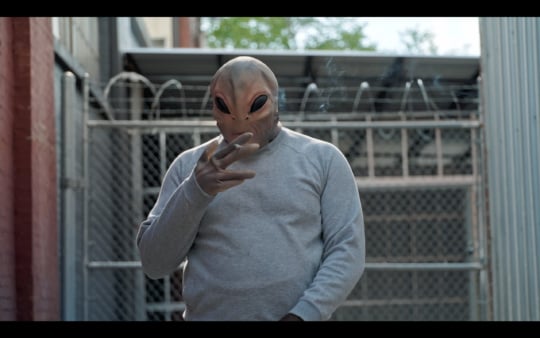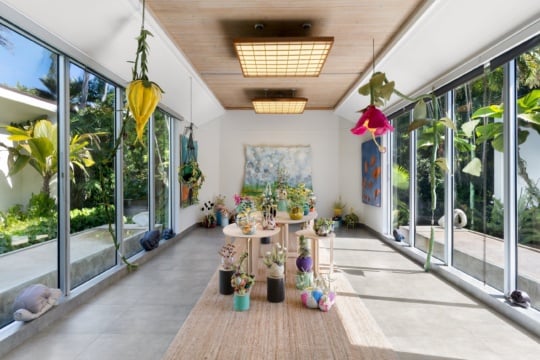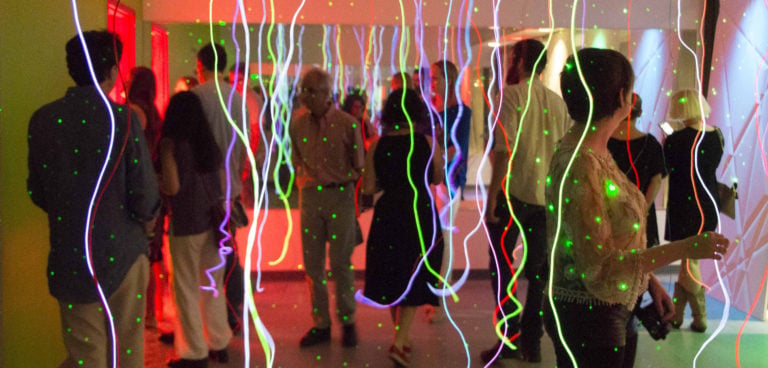
Atlanta arts non-profit MINT underwent several changes after leaving its location on North Highland in 2016, operating out of a temporary exhibition space in Downtown’s Flatiron Building that fall and announcing the resignation of creative director Candice Greathouse the following February. Originally founded by Erica Jamison in 2006 as an outgrowth of a community-based media class at Georgia State, the rebranded and reinvigorated MINT has found a new home on Peachtree Street Southwest. In this new space, MINT has hosted three shows including the recent exhibition by Leap Year artist Angela Davis Johnson and the first installment of a new program called Who’s Behind the Bar, which transforms the gallery into a carefully curated speakeasy with decor and drinks based on the work of an Atlanta artist. At the inaugural Who’s Behind the Bar event in June, inspired by Jiha Moon, the space became a hip but playful K-pop bar featuring Hello Kitty puzzles and Korean snacks. The next iteration of Who’s Behind the Bar, on August 11, will take its inspiration from the work of Michi Meko.
In addition to these developments, MINT also recently hired a new executive director, Cory Klose, who is the organization’s second leader following founding director Erica Jamison, who served in that role on a volunteer basis for over a decade. I recently spoke with Jamison and Klose about MINT’s growth, Klose’s background as a musician and arts administrator, and how an organization known for its youthful energy is embracing a more grown-up approach to planning for the future.
Logan Lockner: It’s been around two years since MINT left its space on North Highland and about a year and a half since the departure of former creative director Candice Greathouse, who was MINT’s first full-time employee. How has the organization grown and changed in that time, and how did the search for a new executive director begin?
Erica Jamison: I want to preface this by saying that Candice was amazing and did a lot of incredible things for MINT, but prior to her leaving and obviously well beyond that, we were doing a lot of planning and reevaluating our mission. We were working with a branding consulting firm that did some pro bono work for us, and they interviewed some of our constituents and did a survey. We’ve been trying to figure out how to take this insight and data and apply it so that we can grow the organization in new directions. That process took about two years.
We eventually concluded that MINT’s Leap Year residency is our most well-known and well-recognized program, our best offering to the community, so we sat down and started thinking about how we can grow Leap Year and what we could do to make it a flagship program that the rest of the organization’s programming revolves around. This first year has sort of been a test of that expansion: we’re serving six artists instead of three, and we’re figuring out ways to have more of a framework for the program. Often in the past, we could provide artists with resources but didn’t have people to work with them day-to-day. Now we’ve hired some full-time employees and are trying to be a little more cognizant of the artists’ needs and where they might need a little more support and guidance.
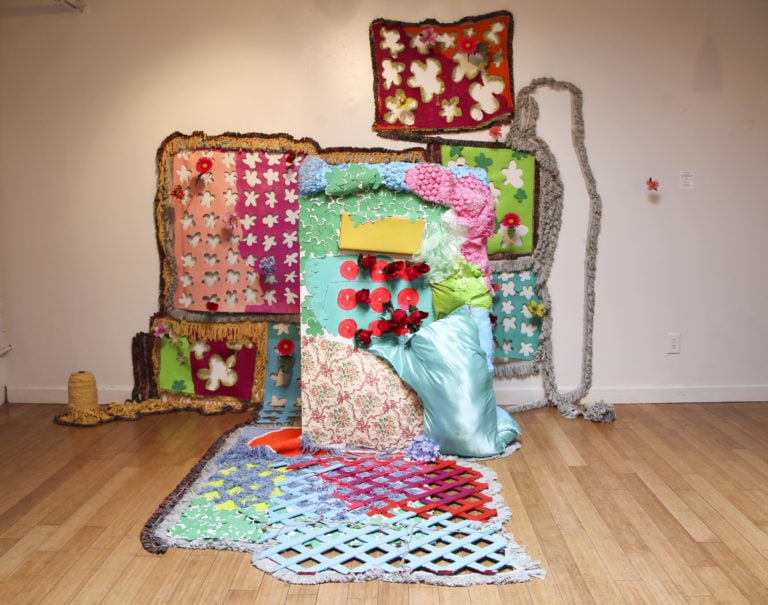
As we relaunched Leap Year and found this new space on Peachtree—which was something we knew we’d need once we reprioritized Leap Year and suddenly needed to host all these exhibitions for the residents—it became apparent very quickly that it was much more than I could handle as an executive director, because I have a day job. It felt like we needed a new perspective, and we sent out the call early this year. Beginning with his phone interview, Cory was at the front of the pack of applicants we really liked.
LL: Cory, can you speak a little bit about your background and what you were doing before you moved to Atlanta and came to MINT?
Cory Klose: My background is largely in nonprofit management. Prior to MINT, I’ve been the managing director of a professional choir based in New Jersey called Kinnara Ensemble for the last 8 years. I’m a classically trained musician, but that was my first foray into working with a nonprofit on the administrative side. I started doing it pro bono to learn my way and help what was, at the time, a very small organization made up of local singers just gathering to hang out and sing some music. Now, we’ve released a commercially distributed studio album, and we’ve gone from paying our singers 20 bucks each time they show up to paying them an actual living wage for a week’s worth of work with concerts and rehearsals. I was there during that growth period, which has been invaluable to me in terms of witnessing the organization progress from the tiniest nonprofit to something much, much larger. Immediately prior to moving to Atlanta, I was living in Santa Fe with my husband for three years and working as director of marketing for the Santa Fe Desert Chorale.
LL: It’s somewhat surprising to hear about your background in musical performance because that’s not something I usually associate with MINT. Do either of you have any thoughts on that? Was it intentional to bring in someone who might have a different perspective?
EJ: We had an amazing creative director in Candice—she really elevated and polished the presentation of what MINT was doing. Prior to that it was just a bunch of kids having fun, and Candice really took it up several notches. We didn’t want to lose that momentum, so having someone come in with some creative experience felt important. But the more we talked about it, the more we realized that a lot of our programming incorporates guest experts: we bring in guest jurors for the juried exhibition and the panel who selects our Leap Year artists. The more we thought about our current programming structure, we decided it was important for MINT to not have a super distinct aesthetic vision. It feels more important that we are cultivating excellent work, but it should feel diverse and unique. When you come to MINT, you should not know what to expect.
It felt to us like it was more important to get somebody in who had an artistic sensibility but who was really a great fundraiser, who could speak to the community they’re working with, who knew how to communicate what we’re doing to funders, and who felt like they aligned with the energy of MINT, which is really hard to articulate or quantify. The sort of curatorial and creative side became less of a priority because we knew we could bring in other people to fill that role, and in some ways that will help us remain more diverse and inclusive, and allow us to present more comprehensive work.
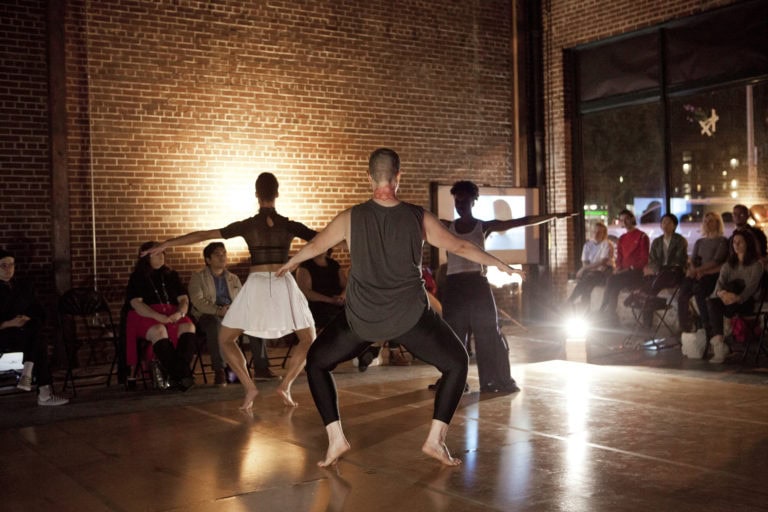
CK: Truly one of the things that attracted me to MINT and to this position specifically was that I didn’t necessarily want to be in a role that requires a curatorial eye. For me, what was attractive was that my skills as a nonprofit leader were more important than an art background.
LL: What catalyzed within MINT over the past few years that caused a transition from being “a bunch of kids having fun” to needing a sense of financial stewardship and long-term sustainability? How do you hold onto the raw youthful energy that has characterized MINT while also being prudent and forward-thinking? How do those things meet in a way that feels organic and true to MINT’s identity?
EJ: First of all, I got older. I founded MINT when I was 23 and all I wanted to do was hang out and look at art and drink PBR. I’m about to turn 35: I personally grew up and learned a lot about fiscal responsibility and growing an organization, and those things sort of happen as you get older.
Going back to what Candice provided us in terms of taking our presentation up a notch, we started being taken more seriously as an organization. I was also really lucky to meet Doug Shipman, the current CEO of the Woodruff Arts Center, a little over a year ago. Learning from him through osmosis and seeing his leadership and hearing how he speaks about the arts has been impactful for me. It was really the culmination of many things coming together. You turn around and you’re like, “Wow, we’re legit.”
CK: The first time Erica and I spoke on the phone, she described this kind of growth that MINT was undergoing, and what was interesting to me is that Kinnara Ensemble had gone through a parallel journey, starting out as a bunch of kids just out of college who wanted to keep singing together and eventually becoming a larger national brand. I thought, “That’s an interesting coincidence; surely it means something.”
EJ: Something else that’s important to us is making sure we have working artists on our board. When you’re making big-picture strategic decisions, it’s important to have people present who represent your audience. Our internship program is another big asset: we’ve often hired past interns on a part-time basis or had them come back to curate shows, and they also bring a fresh, youthful energy to the space that would otherwise be lost.
LL: At what point in that process did MINT begin considering being certified by W.A.G.E.?
EJ: W.A.G.E. (which stands for Working Artists and the Greater Economy) is an organization in Brooklyn, and they essentially have a tiered system based on the budget of each organization hoping to be certified that outlines a floor fee that should be paid to artists for a solo exhibition, a group exhibition, an artist talk, a performance, you name it. When Candice was still working with us, she and I started trying to pay artists at that level. We started using that as a guiding principle for how we program. For a long time, we did a lot of big group shows with 30 or 40 people included. I think Craig Drennen was the juror for our first juried show, and we had work hanging in the bathroom. We realized that if we wanted to be W.A.G.E.-certified, it would bankrupt us to pay that many artists fairly. We began including fewer artists in shows but paying all of them. Now we work with fewer artists but are able serve them better. Yes, it’s scaled back, and the number of artists we’re serving is smaller, but we hope each artist feels that impact more deeply. A big part of what MINT does is exhibit work that isn’t commercial, and you don’t really get paid for that kind of work until you’re mounting a retrospective at an institution. We’re certainly not paying artists enough to sustain them full-time, but we hope it makes a dent and that we can grow. We aren’t there 100 percent, but we’re trying.

